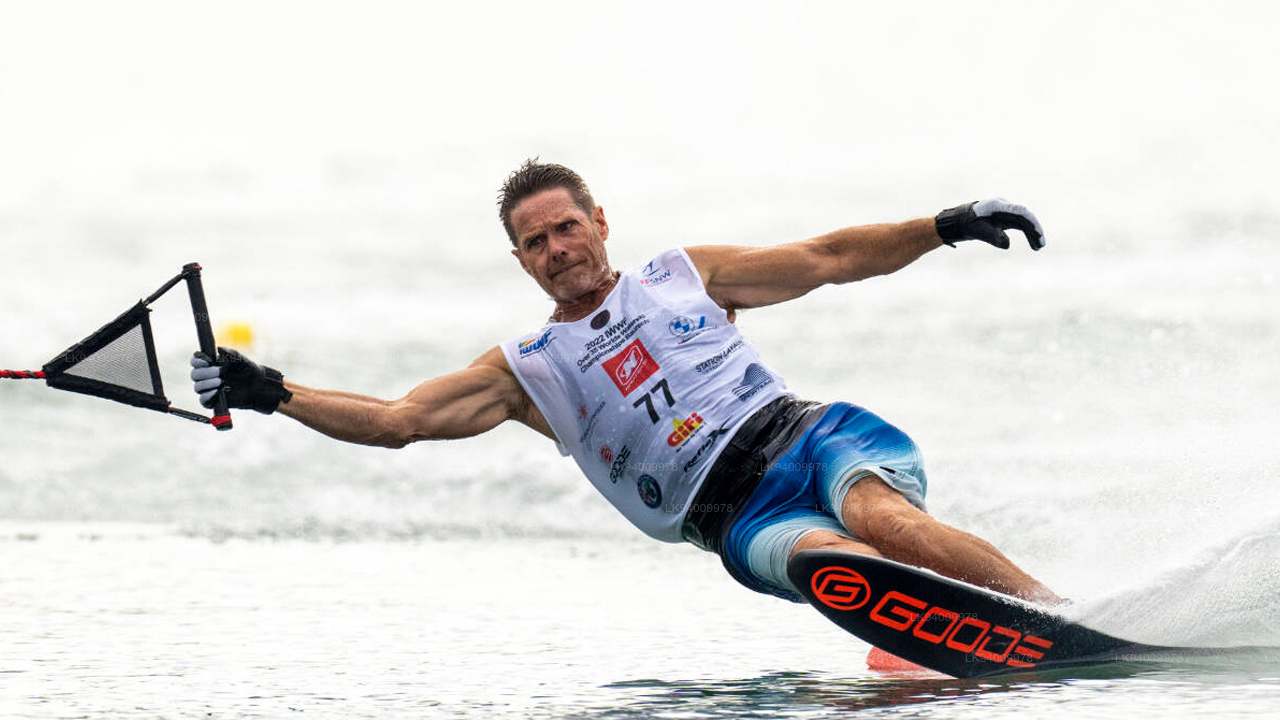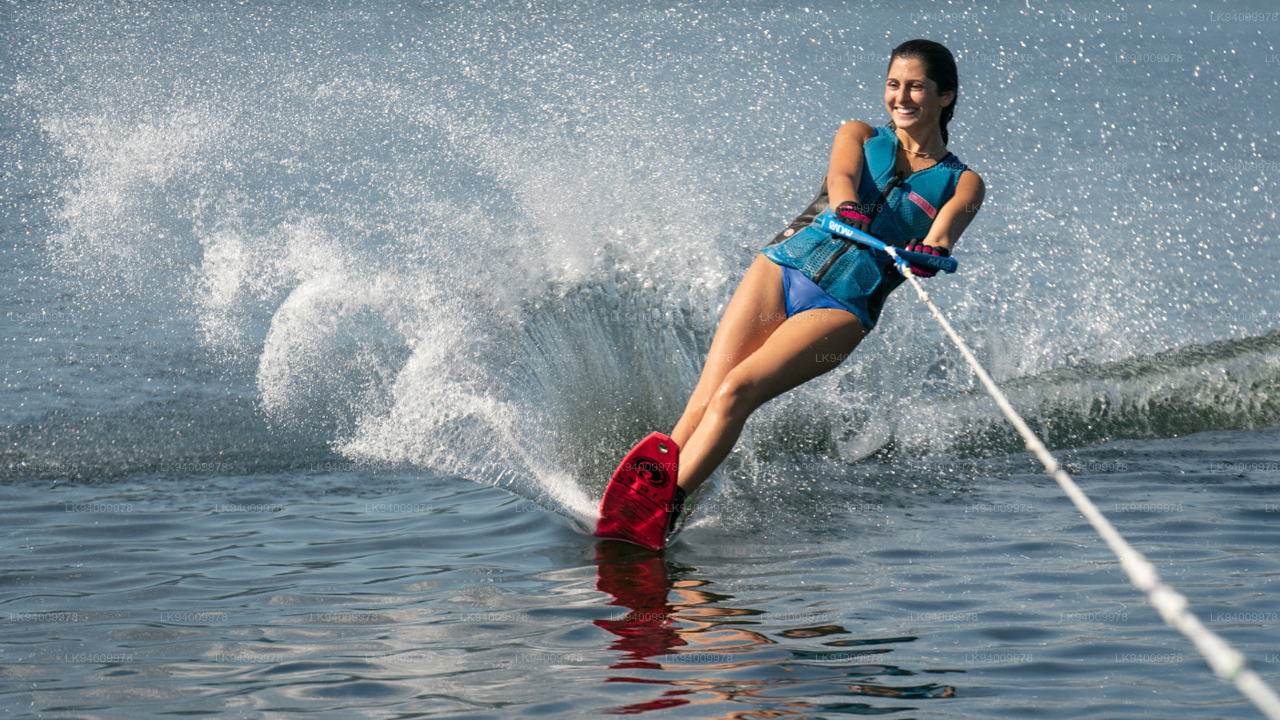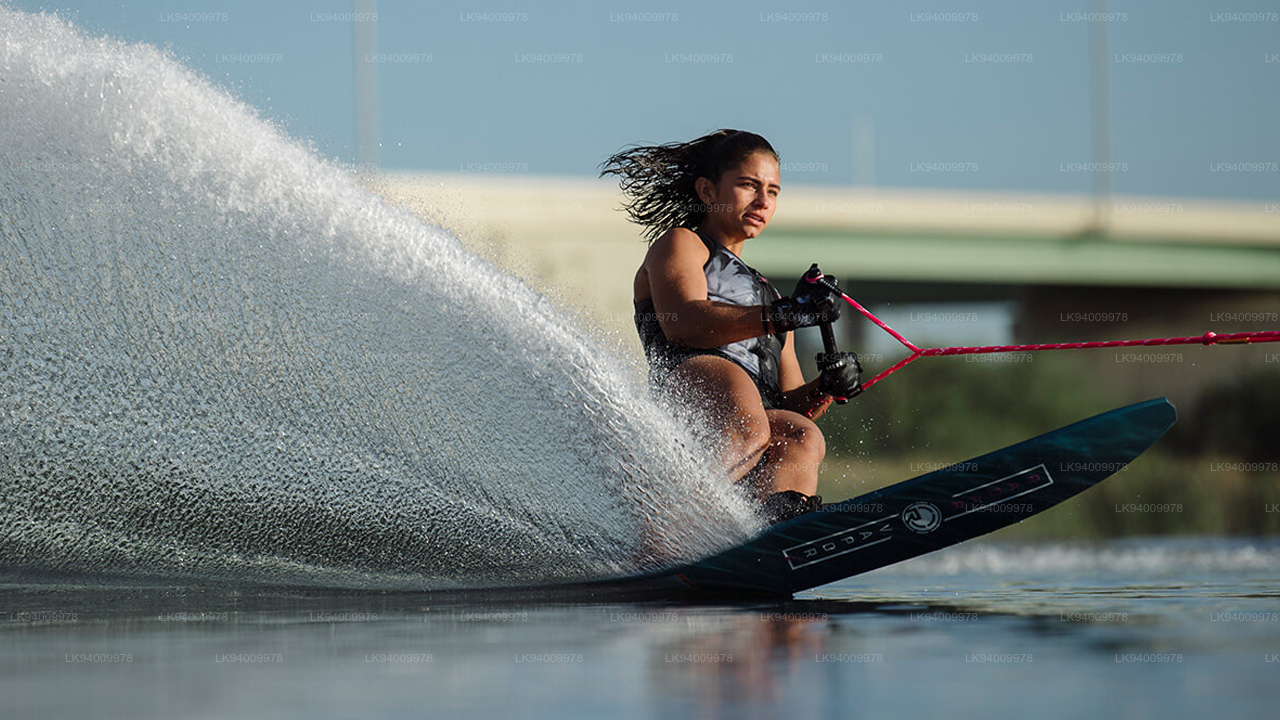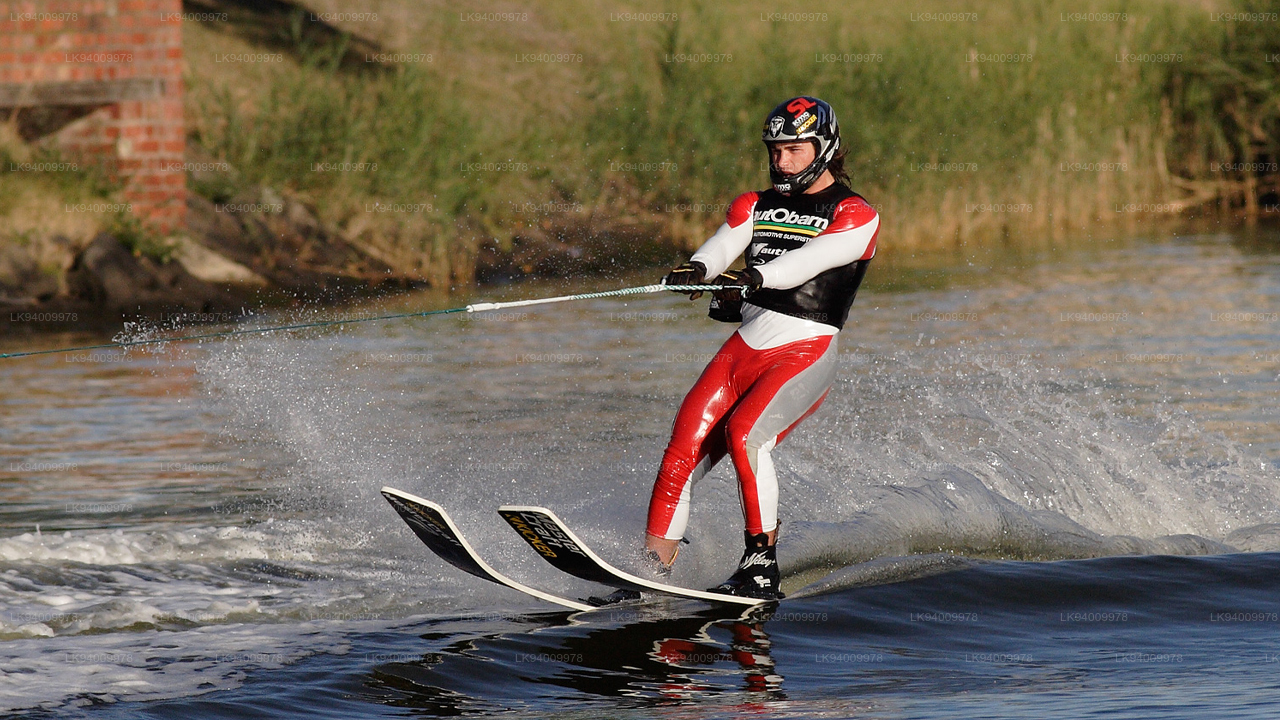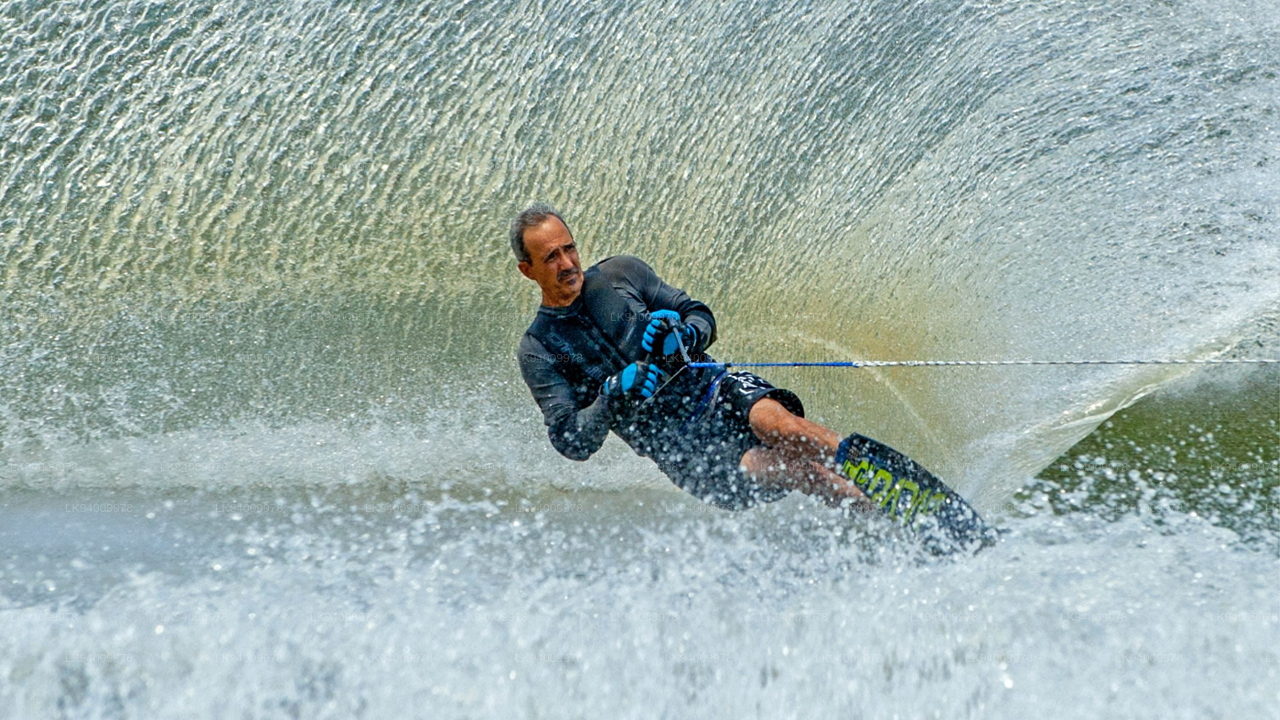Water Skiing
Water skiing (also waterskiing or water-skiing) is a surface water sport in which an individual is pulled behind a boat or a cable ski installation over a body of water, skimming the surface on two skis or one ski. The sport requires sufficient area on a stretch of water, one or two skis, a tow boat with tow rope, two or three people (depending on local boating laws), and a personal flotation device. In addition, the skier must have adequate upper and lower body strength, muscular endurance, and good balance.
There are water ski participants around the world, in Asia and Australia, Europe, Africa, and the Americas. In the United States alone, there are approximately 11 million water skiers and over 900 sanctioned water ski competitions every year. Australia boasts 1.3 million water skiers. There are many options for recreational or competitive water skiers. These include speed skiing, trick skiing, show skiing, slaloming, jumping, barefoot skiing and wakeski. Similar, related sports are wakeboarding, kneeboarding, discing, tubing, and sit-down hydrofoil.
Basic Technique
Water skiers can start their ski set in one of two ways: wet is the most common, but dry is possible. Water skiing typically begins with a deep-water start. The skier enters the water with their skis on or they jump in without the skis on their feet, have the skis floated to them, and put them on while in the water. Most times it can be easier to put the skis on when they are wet. Once the skier has their skis on they will be thrown a tow rope from the boat, which they position between their skis or, if on only one ski, to the left if right foot forward and to the right if left foot forward. In the deep-water start, the skier crouches down in the water while holding onto the ski rope; they are in a cannonball position with their legs tucked into their chest, with skis pointing towards the sky and approximately 30 cm (0.98 ft) of the ski out of the water. The skier can also perform a "dry start" by standing on the shore or a pier; however, this type of entry is recommended for professionals only. When the skier is ready (usually acknowledged by them yelling "in gear,": followed by "hit it"), the driver accelerates the boat. As the boat accelerates and takes up the slack on the rope, the skier allows the boat to pull them out of the water by applying some muscle strength to get into an upright body position.
By leaning back and keeping the legs slightly bent, the skis will eventually plane out and the skier will start to glide over the water. The skier turns by shifting weight left or right. The skier's body weight should be balanced between the balls of the feet and the heels. While being towed, the skier's arms should be relaxed but still fully extended so as to reduce stress on the arms. The handle can be held vertically or horizontally, depending on whichever position is more comfortable for the skier.
In addition to the driver and the skier, a third person known as the spotter or the observer should be present. The spotter's job is to watch the skier and inform the driver if the skier falls. The spotter usually sits in a chair on the boat facing backwards to see the skier. The skier and the boat's occupants communicate using hand signals (see the Safety section below).
Safety Measures
As water skiing is a potentially dangerous sport, safety is important.There should be a 200 feet (61 m) wide skiing space and the water should be at least 5 to 6 feet (1.5 to 1.8 m) deep. The towboat should stay at least 100 feet (30 m) from docks, swim areas, and the shore, and other boats should steer clear of skiers by at least 100 feet. Without proper space and visibility skiing can be extremely dangerous. Skiers should wear a life jacket regardless of swimming ability. Specially-designed life jackets or ski vests allow movement needed for the sport while still providing floation for a downed or injured skier. The most common water ski injuries involve the lower legs, such as the knee, because a fall at high speed can create irregular angles of collision between the skier's body and the water surface. Another common cause of injury is colliding with objects on or near the water, like docks.
The tow boat must contain at least two people: a driver and an observer. In most locales, the observer will need to be at least 12 years of age. The driver maintains a steady course, free of obstacles to the skier. The observer continually observes the skier, relays the condition of the skier to the boat driver, and if necessary, raises the "skier down" warning flag, as required, when a skier is in the water, returning to the boat, or in some localities, the entire time the skier is out of the boat. The skier and observer should agree on a set of standard hand-signals for easy communication: stop, speed up, turn, I'm OK, skier in the water, etc.

